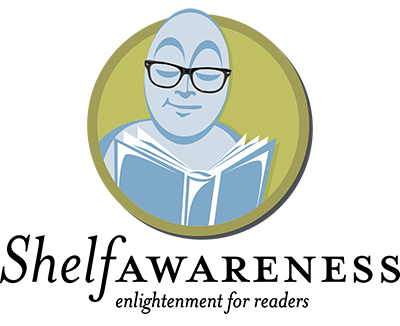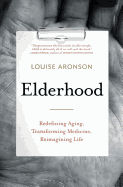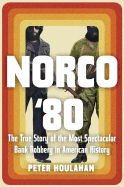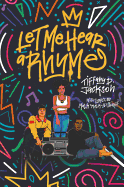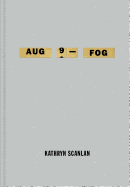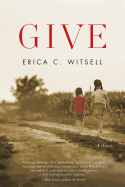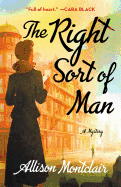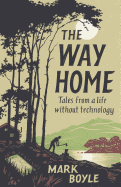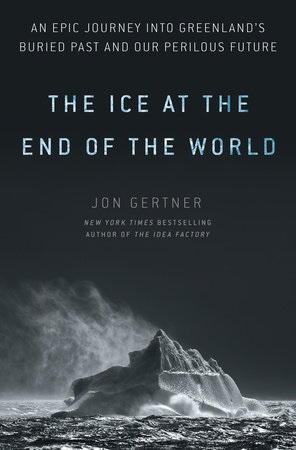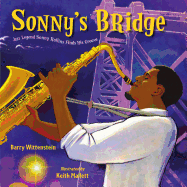Tuesday, June 11, 2019
America's national pastime has always been ripe for thoughtful musings, from the metaphysics of Yogi Berra to the serene prose of Roger Angell; now, in Infinite Baseball (Oxford University Press, $21.95), Berkeley philosophy professor Alva Noë ponders the game with clarity and wit as he dissects his own claims about baseball, such as that scorekeeping is about figuring out how to tell a story. Baseball is not a numbers game, it is a quantitative game; its main concern is "who deserves credit or blame for what," and, in this sense, it is a philosophical game.
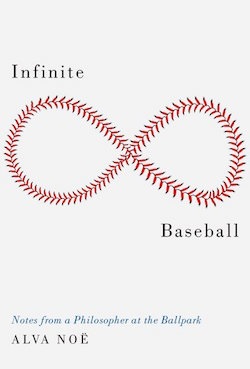 Watching, playing, umping, coaching--we observe, we cheer, we participate. If we take it seriously, we become preoccupied with keeping score. That leads Noë to the criticism that baseball is boring (it's not, if you pay attention to more than homers; but it is difficult--it requires knowledge and focus). Baseball is slow, it takes however long it takes. But, he says, we need to slow down anyway. "We need to unplug.... We need evenings at the ballpark, evenings spent outside of real time." He explains the "epic opportunity for self-actualization" in the showdown between pitcher and batter, wherein the at-bat is a delicate dialogue (poet Robert Francis wrote, "Not to, yet still, still to communicate/ Making the batter understand too late."); baseball on TV ("passive and sedative"); no-hitters and the meaning of life; baseball and linguistics. He dives into the controversy over PEDs: How is so-called Tommy John surgery different from performance-enhancing medicine? What if, he asks, under the right conditions, drugs "might actually improve [athletes'] health and safety by helping their bodies cope better with the extraordinarily brutal wear and tear of their labor."
Watching, playing, umping, coaching--we observe, we cheer, we participate. If we take it seriously, we become preoccupied with keeping score. That leads Noë to the criticism that baseball is boring (it's not, if you pay attention to more than homers; but it is difficult--it requires knowledge and focus). Baseball is slow, it takes however long it takes. But, he says, we need to slow down anyway. "We need to unplug.... We need evenings at the ballpark, evenings spent outside of real time." He explains the "epic opportunity for self-actualization" in the showdown between pitcher and batter, wherein the at-bat is a delicate dialogue (poet Robert Francis wrote, "Not to, yet still, still to communicate/ Making the batter understand too late."); baseball on TV ("passive and sedative"); no-hitters and the meaning of life; baseball and linguistics. He dives into the controversy over PEDs: How is so-called Tommy John surgery different from performance-enhancing medicine? What if, he asks, under the right conditions, drugs "might actually improve [athletes'] health and safety by helping their bodies cope better with the extraordinarily brutal wear and tear of their labor."
Exploring the mysteries and nuances of baseball is one essence of the game. Alva Noë writes that baseball is exceptional "because we care so much about it, because we play baseball and sing its praises and write about it and endeavor to revise it and make it better." Infinite Baseball does just that. --Marilyn Dahl, Shelf Awareness
Mrs. Everything
by Jennifer Weiner
Jennifer Weiner (Good in Bed; Hungry Heart) has created a novel for the ages in Mrs. Everything, which is as impressive as it is ambitious.
Just shy of 500 pages, this is a skillfully rendered and emotionally rich family saga capturing 70 years of American life as experienced by two Jewish sisters. The novel begins in the 1950s in Detroit, where Jo and Bethie grow up in a Jewish suburb. Bethie is the apple of her mother's eye, while Jo, the oldest and more unconventional in her appearance and interests, clashes with her mother's expectations. Jo realizes from a young age that she's gay, and this sets up conflict not only with her mother, but with society in general.
With vibrant descriptive powers and a potent sense of history, Weiner delineates her protagonists' college years. She reveals the 1960s in all their heady psychedelic delirium. Jo and Bethie take much different paths into the '70s, '80s and beyond. That its timeline ends with the 2016 presidential election and the MeToo movement is fitting. Events come full circle, and Jo's daughters have more options, thanks to the women before them. That doesn't stop Jo from worrying about the pressures placed upon them. "Women had made progress... but she wondered whether they would ever not try to have it all and do it all and do all of it flawlessly," Weiner writes.
She defines a formative period for women in the U.S. and shows that big, expansive social novels are not only still possible in our fragmented society but necessary. Mrs. Everything is a great American novel, full of heart and hope. --Scott Neuffer, writer, poet, editor of trampset
Discover: Jennifer Weiner's ambitious and life-affirming novel follows two sisters through seven decades of American history.
Aug 9 - Fog
by Kathryn Scanlan
Through an inventive format, Kathryn Scanlan shares a serendipitous treasure discovered long ago in a box of unsold estate auction items destined for the garbage. Worn and water-damaged, the diary's physicality intrigued Scanlan, but she ultimately set it aside, assuming its contents were mostly indecipherable.
Years later, Scanlan rediscovered the diary--given to an Illinois woman for her 86th birthday--and spent a decade immersing herself in the distinctive language that chronicled her days between 1968 and 1972. Eventually, the diarist's particular and measured language ("Terrible windy everything loose is traveling." "That puzzle a humdinger.") became intertwined with Scanlan's own voice, the diary "something like kin--a relation who is also me, myself."
Exasperated but unable to resist, Scanlan surrendered to the mixed influences and wrote Aug 9 - Fog. In fleeting, diary-esque entries sectioned by season, Scanlan writes in a new vernacular resulting from the commingling, an unusual "co-authoring" that holds multiple layers of mystery. Where the diarist's nonfiction and Scanlan's fiction meet or marry is unknown--somewhat frustratingly unknowable in the most intriguing of ways.
The "story" is by turns clear and vague. Day-in-the-life details (weather changes, church-going, pie-making, visiting) and profound life and death events paint a full spectrum over the course of time. Guesses can be made as to the identities of recurring characters "Vern" and "D.," but the varying forms and linguistic style is both provoking and devilishly satisfying. Aug 9 - Fog is a one-sitting read that echoes long after the final "Winter" has passed. --Lauren O'Brien of Malcolm Avenue Review
Discover: A true-life artifact and the author's imagination meld to depict the life of an elderly woman from a small Midwest town.
Give
by Erica C. Witsell
Family loyalty is stretched almost to the breaking point in Give, but sisters Jessie and Emma never waver in their mutual love. The girls' mother, Laurel, is a narcissist who abandons her daughters, but the girls' grit and their father's stoic support guide them in Erica C. Witsell's striking debut novel.
Laurel's pregnancy prompts a wedding to college professor Len during her senior year at Berkeley in 1974. Resentful of her interrupted youth, she's an unenthusiastic mother, toying with infidelity when Emma is conceived. After the inevitable divorce, she concedes custody to Len, who remarries and provides a stable home for the girls. But Laurel reappears inconsistently, luring the girls to her Northern California ranch and her relaxed lifestyle for vacations. Jessie takes to the bohemian atmosphere but Emma resists, even refusing to visit, a schism that erodes the sisters' relationship. Variations on this theme persist, including Laurel's denied request for a change of custody. After a 10-year break, the story resumes with both Jessie and Emma successful college graduates and Laurel announcing that she is moving, to become the third in a polyamorous relationship.
The sisters are sympathetic characters, struggling with their identities, faithful to each other, while Laurel is quirky to the point of incredulity. The plot rolls toward a climax that is both incredible and fascinating. Witsell has crafted a story of relationships, love and guilt that, while dramatically complex, underscores the challenges of humans linked by family ties. --Cheryl Krocker McKeon, manager, Book Passage, San Francisco
Discover: The impact of divorce resonates through two sisters' lives--their mother's inconsistency and demands persist into their adulthood.
Honestly, We Meant Well
by Grant Ginder
Two UC Berkeley professors and their graduating son face crises and new awakenings on their Grecian vacation in Grant Ginder's sensitive, lighthearted fourth novel.
When classics professor Sue Ellen Wright gets the chance to spend a month on the paradisiacal Greek island where she once studied as a doctoral student, her husband, Dean, and their 23-year-old son, Will, join her. Dean, a famous novelist, thinks leaving the country will help him break off an affair with a college student. Will feels pressured to live up to Dean but inherited none of his father's talent. He also just lost a job opportunity, got dumped by his boyfriend and plagiarized one of Dean's unpublished stories for his senior thesis. Unaware of the male Wrights' deceptions, Sue Ellen checks the family into the Alectrona--a rundown hotel formerly owned by her lost love Christos and now run by his daughter Eleni, who is considering selling it to Swiss developers. When the Wrights' secrets come to light, they must decide whether they have a future as a family.
Ginder (The People We Hate at the Wedding) adds just the right amount of sparkling waters and ancient ruins to give this family drama a sunny lightness despite dark themes of infidelity and thwarted plans. Will and Sue Ellen's journeys to find versions of themselves not defined by their relationships with Dean feel authentic, the resolutions well-earned. Sometimes humorous and always witty, Honestly, We Meant Well will inspire readers to ponder their own roads less traveled. --Jaclyn Fulwood, blogger at Infinite Reads
Discover: Grant Ginder's fourth novel follows a married couple and their grown son on a Grecian vacation where their pasts and secrets catch up to them.
Mystery & Thriller
The Right Sort of Man
by Allison Montclair
It's 1946, and the Right Sort Marriage Bureau is open for business. Iris Sparks, who until recently worked for the British government (she just can't say exactly what she did), and Gwendolyn Bainbridge, an upper-class widow who lost her husband during the war, have teamed up in a matchmaking venture.
Business is booming for Iris and Gwen--until one of their clients turns up dead. Gwen and Iris are sure that Tillie La Salle's death has nothing to do with their perfectly respectable marriage bureau. But they can't have the police nosing around, scaring off future clientele, so Iris boldly begins an investigation of her own, with some reluctant assistance from Gwen.
The Right Sort of Man is a fantastic historical romp. It mixes the bureau's various clients in search of their perfect spouse with an intriguing case that takes the two women into the underworld of stocking smugglers and other criminals trying to get around strict postwar rationing. Gwen's tragic past and Iris's vim make them a delightfully unusual pair, adding humor to the way they investigate. But when Iris goes undercover, posing as a friend of Tillie, things quickly become dangerous for the ladies of the marriage bureau. Fans of Jacqueline Winspear or Rhys Bowen will love The Right Sort of Man. This is the first novel by Allison Montclair, and she has created a charming and insightful pair of detectives that will hopefully be featured in many more books. --Jessica Howard, bookseller at Bookmans, Tucson, Ariz.
Discover: In 1946 London, two women have set up a matchmaking business, but turn their hand to sleuthing when one of their clients is found dead.
Biography & Memoir
Elderhood: Redefining Aging, Transforming Medicine, Reimagining Life
by Louise Aronson
For many, old age is a far-off concern shuffled to the back of their minds, where it distorts under the societal obsession with youth and beauty. For Louise Aronson, thoroughly accomplished in both the medical (American Geriatrics Society Geriatrician of the Year) and literary (A History of the Present Illness) fields, aging and the elderly are her passion. In Elderhood: Redefining Aging, Transforming Medicine, Reimagining Life, she gathers roughly three decades of case histories, criticism, curiosity and wisdom to offer readers a holistic, compassionate understanding of the third stage of life: elderhood.
From the beginning, Aronson is quick to point out how limited the dominant cultural understanding of old age is, as it distinguishes between the "successful aging" of some while bemoaning the illness and disability of others. She exposes the default of ageism again and again in her meticulous consideration of medical and family networks, political policy, municipal oversights, capitalist ambition and nearly every other sector of life that comes in contact with (or at the expense of) the elderly.
Older bodies aren't simply longer-lived versions of younger ones, just as adult bodies aren't simply bigger versions of children's. In Aronson's paradigm, each stage of life (childhood, adulthood, elderhood) requires a certain style of attention key to a person's quality of living. Elderhood, like the life station it studies, is dynamic, multifaceted and full of wonder. Aronson's writing flexes with vibrant energy as she discusses the ways she has seen the healthcare system neglect the overall well-being of her patients, her colleagues and herself.
Intimidating as it may seem, elderhood becomes welcoming and generous in Aronson's deft care. --Dave Wheeler, associate editor, Shelf Awareness
Discover: A seasoned geriatrician gathers anecdotes and data to craft a more robust representation of what it means to grow old in a society geared toward ageism.
Love Thy Neighbor: A Muslim Doctor's Struggle for Home in Rural America
by Ayaz Virji and Alan Eisenstock
Feeling compelled to help address the shortage of doctors in the rural U.S. and wanting to be more engaged with his patients, in 2013 Ayaz Virji moved his family from Pennsylvania to tiny Dawson, Minn. For several years the Virji family thrived in Dawson--until the 2016 election, when anti-Muslim remarks were made about Dr. Virji, his wife and their children.
Virji candidly shares his rage: anger at Donald Trump's election, fury with his neighbors for voting for Trump and fear for his children in this new America. In fact, he'd already lined up a job in Dubai and had called a real estate agent to put their house up for sale, when he was approached by a local Lutheran pastor. Mandy France wanted Virji to speak at her church as part of an interfaith panel, addressing the local populace about what being Muslim truly means.
In March 2017, Virji gave his first lecture to a crowd of 400 people, more than a quarter of Dawson's residents. This began a series of speeches, as Virji traveled around Minnesota speaking. His lectures laid the groundwork for Love Thy Neighbor: A Muslim Doctor's Struggle for Home in Rural America. Clear-eyed and concise, Virji shares his journey to Islamic faith, his family's experiences post-9/11 and his fears for the future. Love Thy Neighbor is a quick and powerful read that hopefully will counteract anti-Muslim rhetoric and challenge people to reach out to their Muslim neighbors, as Pastor Mandy did with Ayaz Virji. --Jessica Howard, bookseller at Bookmans, Tucson, Ariz.
Discover: In this powerful memoir, a Muslim doctor shares his family's struggle to belong in rural Minnesota in the wake of the 2016 election.
Social Science
Norco '80: The True Story of the Most Spectacular Bank Robbery in American History
by Peter Houlahan
Norco '80 is enthrallingly detailed, down to the pencils thrown by opposing counsel in the criminal trial that followed "the most spectacular bank robbery in American history." Despite the depth and breadth recounted by journalist and EMT Peter Houlahan, the urge this book generates in readers to explore further this devastating true crime is impossible to suppress.
Houlahan begins with the not-well-laid plans of the felons (46 counts worth), who saw themselves not as criminals but simply needing funds to support their survivalist ideals in the face of the impending apocalypse. They were armed to the teeth, sparking a ferociously one-sided firefight that spanned more than 40 miles of crime scene in Riverside County, Calif. Responding law enforcement agencies were vastly overmatched, and the tragic outcome helped prompt a sea change in police weaponry, interagency communications (lack of which resulted in a life-and-death game of "telephone") and mental health support.
The drawn-out capital murder trial was perhaps even more outlandish than the pursuit preceding it, "highlighted" by a judge who took pictures during proceedings as mementos, a sex scandal and the defense continually attempting to "shove... sticks in the spokes of justice," including pinning the crime on a nonexistent man. Houlahan has admirably mined and winnowed the boundless material, and while nonfiction purists might be put off by some liberties taken (e.g., the inner monologue of a dying man), he has compellingly translated a high-octane story to the page without losing traction, leaving the reader satisfied yet craving more. --Lauren O'Brien of Malcolm Avenue Review
Discover: This is fascinating true story of a 1980 Southern California bank robbery gone very wrong and the bizarre, drawn-out trial of the surviving perpetrators.
Nature & Environment
The Way Home: Tales from a Life Without Technology
by Mark Boyle
Mark Boyle was The Moneyless Man in his memoir of that title, about the first of three years he spent living without money. The Way Home: Tales from a Life Without Technology covers another first year: Boyle has now made the shift to a life without modern technology in County Galway, Ireland. What is modern technology? Obviously, definitions are complicated, but for Boyle his new way of living means hauling his own water; fishing, foraging and gardening for his food; making his own beer and wine; and traveling by bicycle, via hitchhiking and on foot.
Organized as the diary of a year in its four seasons, The Way Home is a thoughtful study, often wise but always questioning and seeking. With frequent references to Edward Abbey, John Muir, Aldo Leopold, Robert Macfarlane, Wendell Berry, Henry David Thoreau and others, Boyle places himself in a grand tradition of intellectual naturalists and thinkers. He aims to query every decision, investigate its results: while writing this book using a pencil, he stops to consider the making of that tool. Boyle, stymied by the ecological impact of such a simple technology as a pencil, is a former vegan who now eats fish and venison. He is a man willing to rethink his outlook.
Boyle has a sense of humor as well as a deep sensitivity to the needs of people as well as the planet and its ecosystems. The result is a deeply appealing examination of nearly all aspects of modern human life, by a thorough, careful, concerned narrator. --Julia Kastner, librarian and blogger at pagesofjulia
Discover: This memoir about living off the grid and tech-free in County Galway will inspire, connect and slow down the most impatient of readers, and that is a very good thing.
The Ice at the End of the World: An Epic Journey into Greenland's Buried Past and Our Perilous Future
by Jon Gertner
Jon Gertner, author of The Idea Factory, crafts a narrative of endurance, discovery and scientific innovation beginning in the 19th century, during the great age of arctic exploration. The Ice at the End of the World: An Epic Journey into Greenland's Buried Past and Our Perilous Future recounts scientists' and explorers' investigations into the vast, frigid island up to the present day. The eccentric figures Gerner profiles--including Fridtjof Nansen and Robert Peary--sometimes seem less motivated by scientific curiosity than the fame and fortune that their adventures brought them, but their grueling treks nevertheless helped chart Greenland and offer insights into its weather, terrain and more. In the 20th century, expeditions became more explicitly scientific even as the island was swept up in Cold War paranoia and became the site of enormous U.S. military bases. Gertner shows how scientists changed approaches over time, going from digging holes in the ice to drilling ice cores that contain thousands of years of climatic history.
Gertner is deeply apprehensive about Greenland's future, which he convincingly demonstrates is tied to the future of our planet. What his scientific heroes discover is alarming: Greenland's ice sheet is rapidly melting. Gertner voices concern for the consequences this will have on rising sea levels, for example, but he also mourns the disappearance of the ice itself. Once thought of as a lifeless desert, Gertner's book memorializes the ice sheet's beauty and the astounding secrets it continues to hold. --Hank Stephenson, bookseller, Flyleaf Books, Chapel Hill, N.C.
Discover: The Ice at the End of the World recounts more than a century of exploration and scientific inquiry in Greenland--and its crucial role in understanding climate change.
Children's & Young Adult
Let Me Hear a Rhyme
by Tiffany D. Jackson
In her third young adult novel, Let Me Hear a Rhyme, Coretta Scott King/John Steptoe Award-winner Tiffany Jackson ushers readers through a comprehensive catalogue of late '90s hip hop in Brooklyn, N.Y., through the story of three teenagers hustling to set off their friend's dream.
When their best friend, Steph, is "murked" (murdered) in late August 1998, Quadir and Jarrell work with his sister, Jasmine, to find a way to share his immense musical talent with the world. Told through multiple points of view, the story winds through events leading to Steph's death and the time immediately thereafter. With a delicate, precise balancing of timelines, signposted with dates at the beginnings of chapters and meticulously recorded via the mention of songs and albums, Jackson perfectly juxtaposes the loss of Biggie and Tupac to gun violence with the incredible lost potential of Steph. The aching for someone who is gone but still ever present and the need to share a legacy is captured beautifully in Jackson's engineering of Steph's relationships with Quadir, Jarrell and Jasmine.
Every character battles their personal guilt, getting to the heart of their grief, to puzzle out what happened the night Steph was killed. "Pain," Quadir says, "can either make you or break you." Each teen must face their pain to bring Steph's voice from six feet under, to be there for the voice that always stepped up for anyone who requested, "Yeah, come on son! Let me hear a rhyme or something." This novel is the perfect mixtape, the tracks (chapters) blending tender slow jams (young love) with dangerous interludes (from shootings to people getting jumped) and seamless transitions, building to heart-pounding page turns. --Breanna J. McDaniel, freelance reviewer
Discover: A soundtrack to the rhythm and verve of '90s hip-hop that's worth putting on repeat, this YA novel harmonizes music and prose to create a certified literary banger.
Sonny's Bridge: Jazz Legend Sonny Rollins Finds His Groove
by Barry Wittenstein, illus. by Keith Mallett
In the 1940s, a young saxophonist named Sonny Rollins began sneaking into Harlem's Apollo Theater and Cotton Club to hear jazz musicians like John "Dizzy" Gillespie and Charlie "Bird" Parker. He began playing "two-bit joints," writing his own music and turning standards like Billie Holliday's "God Bless the Child" into his own. By his 20s, he had rocketed "to the top of the jazz universe." But when he was "twenty-nine in '59, in his prime,/ Sonny shatter[ed] the jazz world" by taking a break from performing and recording. Sonny looked for a private place to play--and found that place on the Williamsburg Bridge.
For more than two years, Sonny found "refuge and sol-i-tude" on the pedestrian walkway of the bridge. When he emerged from his self-imposed exile, he went back into the recording studio and released to acclaim a new album called The Bridge. He had become "more confident in himself as a musician and as a person," Barry Wittenstein (Waiting for Pumpsie) writes in the "Liner Notes" of the book's back matter (which also include an author's note, a timeline of Rollins's life and additional notes and quotes).
Wittenstein's energetic text mimics the syncopated rhythms of jazz, incorporating the lingo and locales of the time. Keith Mallett's (Take a Picture of Me, James VanDerZee) digital illustrations also capture the electric mood of the end of the bebop era. Using warm, vibrant colors, his depictions of Sonny and his cohort are expressive and full of life. Readers accustomed to YouTube superstars will be intrigued by this story of one musician truly "find[ing] his groove" after stepping away from the limelight for an unimaginably long period (in today's terms) of more than two years. --Emilie Coulter, freelance writer and editor
Discover: This dynamic picture book tells how legendary jazz sax player Sonny Rollins, at the height of his career, stepped out of public view to find his groove again.
| Advertisement Meet belle bear! |

